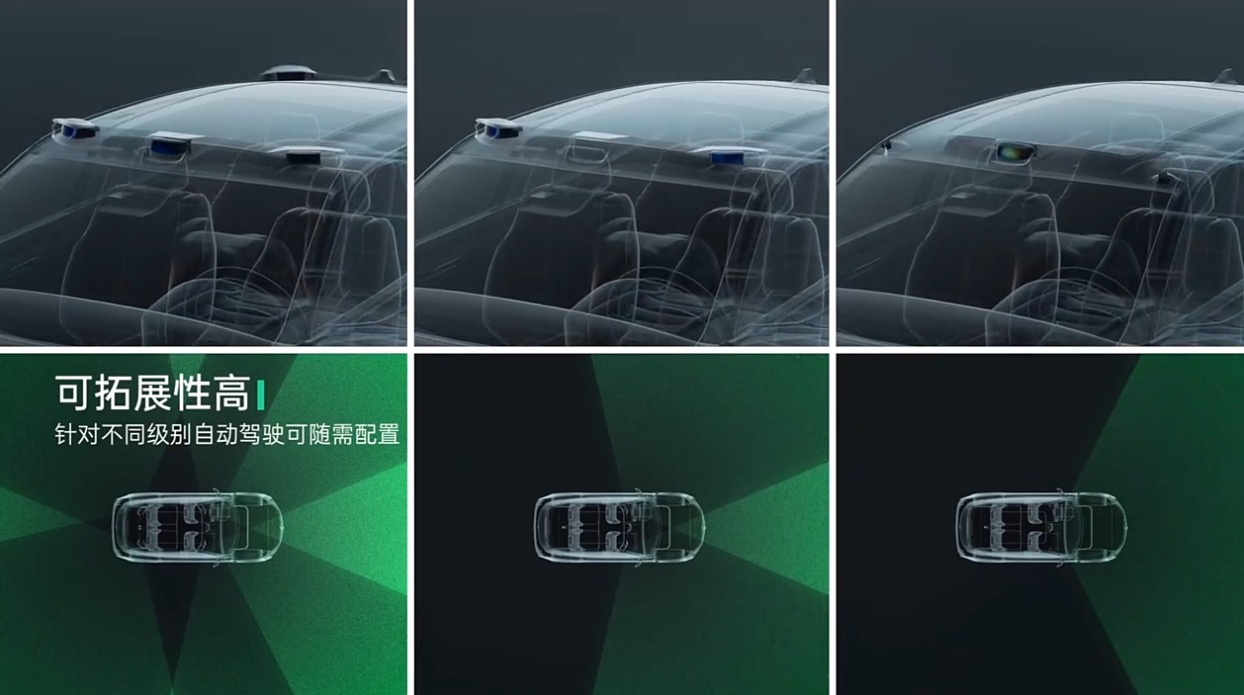On June 7th, WeRide, an L4 level autonomous driving technology company, officially released the new generation of autonomous driving sensor kit WeRide Sensor Suite 5.0 (referred to as WeRide SS 5.0), and announced that the Robotaxi fleet equipped with this kit has been fully put into scale testing and application.
The main sensors of the SS 5.0 perception kit are 12 cameras and 7 solid-state LiDARs. Among them, the top front perception module is equipped with 3 solid-state LiDARs, 5 mid-range cameras, and 2 long-range cameras, abandoning the previous “hat” shape. The tail perception module is equipped with 1 solid-state LiDAR and 1 mid-range camera, which is hidden in the vehicle body, responsible for the perception coverage of the back; combined with the blind spot LiDARs and fisheye cameras around the vehicle, it forms a complete WeRide SS 5.0 perception system.
It can be seen that WeRide intends to integrate this perception hardware with the vehicle body design, while maximizing the retention of the original shape of the vehicle body and achieving full-range perception capability.
In March of this year, WeRide announced that it will use the NVIDIA Orin system-on-chip to build a new generation of autonomous driving solutions. WeRide SS 5.0 can stably operate on compute platforms with 250-500 TOPS of computing power, so the new computing platform is likely to be a dual Orin solution.
In addition, compared with the previous generation of sensor kits, WeRide SS 5.0 perception sensor kit has the following advantages:
- Low cost and lightweight
- High efficiency
- Strong applicability
WeRide SS 5.0 has further reduced its size and weight: the height of the top front perception module has been reduced by 66%, the thickness has been reduced by 15%, and the overall weight has been reduced by 17%, further achieving lightweight of autonomous driving products. On this basis, WeRide SS 5.0 can also achieve a radius of over 200 meters and 360° perception capability around the vehicle body.In the context of the difficulties in business implementation at L4 and the obstacles in upward breakthrough at L2, many L4-level autonomous driving companies rooted in the past have entered the L2 market seeking implementation opportunities.
Last month, QZ DJI released the fourth-generation production-level self-driving solution DBQ V4, claiming that the cost has been reduced to within ten thousand yuan.

Similarly, WeRide SS 5.0 is also designed for mass-produced intelligent driving. Whether it is the design layout and cost of the sensors or the reusable WeRide ONE general-purpose autonomous driving algorithm independently developed by WeRide, all of these are powerful weapons for WeRide to move toward the implementation of intelligent driving.
This article is a translation by ChatGPT of a Chinese report from 42HOW. If you have any questions about it, please email bd@42how.com.
